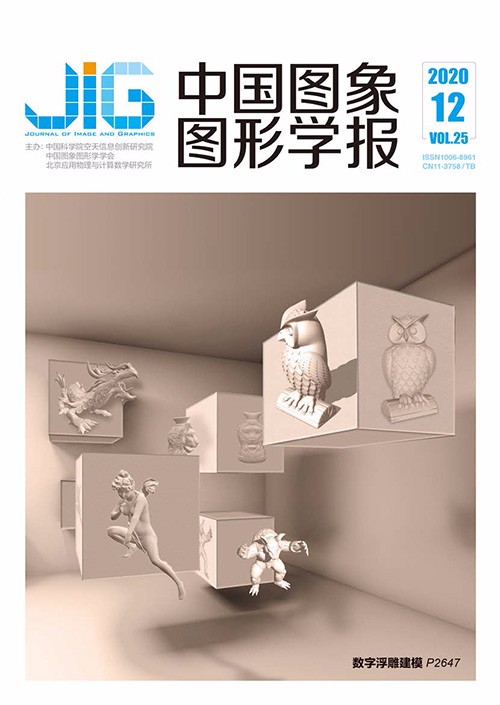
改进卷积网络的高分遥感图像城镇建成区提取
侯博文1,2, 闫冬梅3,4, 郝伟1, 黄青青3, 苏秀琴1, 李青雯3,2(1.中国科学院西安光学精密机械研究所, 西安 710119;2.中国科学院大学, 北京 100049;3.中国科学院空天信息创新研究院, 北京 100094;4.海南省地球观测重点实验室, 三亚中科遥感研究所, 三亚 572029) 摘 要
目的 城镇建成区是城镇研究重要的基础信息,也是实施区域规划、落实城镇功能空间布局的前提。但是遥感影像中城镇建成区的环境复杂,同时不同城镇建成区在坐落位置、发展规模等方面存在许多差异,导致其信息提取存在一定困难。方法 本文基于面向图像语义分割的深度卷积神经网络,使用针对特征图的强化模块和通道域的注意力模块,对原始DeepLab网络进行改进,并通过滑动窗口预测、全连接条件随机场处理方法,更准确地实现城镇建成区提取。同时,针对使用深度学习算法容易出现过拟合和鲁棒性不强的问题,采用数据扩充增强技术进一步提升模型能力。结果 实验数据是三亚和海口部分地区的高分二号遥感影像。结果表明,本文方法的正确率高于93%,Kappa系数大于0.837,可以有效地提取出大尺度高分辨率遥感影像中的城镇建成区,且提取结果最为接近实际情况。结论 针对高分辨率遥感卫星影像中城镇建成区的光谱信息多样化、纹理结构复杂化等特点,本文算法能在特征提取网络中获取更多特征信息。本文使用改进的深度学习方法,提出两种处理方法,显著提高了模型的精度,在实际大幅遥感影像的使用中表现优秀,具有重要的实用价值和广阔的应用前景。
关键词
Urban built-up area extraction using high-resolution remote sensing images with an improved convolutional neural network
Hou Bowen1,2, Yan Dongmei3,4, Hao Wei1, Huang Qingqing3, Su Xiuqin1, Li Qingwen3,2(1.Xi'an Institute of Optics and Precision Mechanics, Chinese Academy of Sciences, Xi'an 710119, China;2.University of Chinese Academy of Sciences, Beijing 100049, China;3.Institute of Aerospace Information Research Institute, Chinese Academy of Sciences, Beijing 100094, China;4.Key Laboratory of Earth Observation, Institute of Remote Sensing of Sanya, Sanya 572029, China) Abstract
Objective The urban built-up area is an important source of basic information for urban research and serves as a prerequisite for the regional planning and implementation of the spatial layout of urban functions. Given the recent developments in Earth observational technologies and improvements in the resolution of remote sensing images, accurately and efficiently extracting information on urban built-up areas has become possible. However, due to the complex environment of urban built-up areas in high-resolution remote sensing images and the variations in their locations and development scales, various forms of remote sensing image representations increase the difficulty of using traditional information extraction methods for urban built-up areas. Recent studies show that deep learning algorithms have significant advantages in processing of large-scale images. This paper then examines these deep learning algorithms and reviews previous research that apply deep convolutional neural network methods, which have been widely used in computer vision to extract information on urban built-up areas from high-resolution satellite images. This article also improves the application of computer image processing technology in the field of remote sensing. Method Semantic image segmentation is crucial in image processing and computer vision. This process recognizes an image at the pixel level and then labels the object category to which each pixel in the image belongs. Based on the deep convolutional neural network oriented to semantic image segmentation, this paper uses the refinement module for the feature map and the attention module of the channel domain to improve the original DeepLab v3 network. The feature refinement module accurately obtains relevant information between pixels and reduces the grid effect. Afterward, the network model processes the feature map through atrous spatial pyramid pooling. The decoding part of the network extracts the attention information of the channel domain and then weighs the low-level features to achieve a better representation and to restore the detailed information. Afterward, the urban built-up area is extracted via the sliding window prediction and full connection conditional random fields methods, both of which can be applied to extract urban built-up areas with better accuracy. However, the use of deep learning algorithms is prone to overfitting and poor robustness. Accordingly, data augmentation and extension are used to enhance the capabilities of the model. Specifically, we use rotation and filter operations while cutting the original training and verification data into 256×256 samples. Result Extracting information from remote sensing images involves an effective mining and category judgment of such information. The experimental data are taken from Gaofen-2 remote sensing images of Sanya and Haikou cities in Hainan Province, China. These images are specifically taken at the Qiongshan District of Haikou City and at the Tianya District, Jiyang District, and the sea surrounding the Jiaotouding Island of Sanya City. Given their weak sample processing ability, traditional classification algorithms have achieved an accuracy rate of no higher than 85% in the experiments. Meanwhile, deep learning methods, such as SegNet and DeepLab v3, have relatively high accuracy and better performance in extracting urban built-up area information from remote sensing satellite images. By using the refinement module for the feature map and the attention module of the channel domain, this paper improves the accuracy rate of the original DeepLab v3 network by 1.95%. Meanwhile, the proposed method has an accuracy rate of above 93%, a Kappa coefficient of greater than 0.837, a missed detection rate of less than 4.9%, and a false alarm rate of below 2.1%. This method can effectively extract urban built-up areas from large-scale high spatial resolution remote sensing images, and its extraction results are the closest to the actual situation. Conclusion The comparative experiment shows that the proposed method outperforms others in extracting urban built-up area information from high-resolution remote sensing satellite imagers with diverse spectral information and complex texture structure. Two processing methods are also proposed to significantly improve the accuracy of the model. Both the sliding window method and conditional random fields processing demonstrate an excellent performance in extracting information from high-resolution remote sensing images and show high application value for large-scale remote sensing images.
Keywords
convolutional neural network (CNN) attention mechanism remote sensing image urban built-up area information extraction
|



 中国图象图形学报 │ 京ICP备05080539号-4 │ 本系统由
中国图象图形学报 │ 京ICP备05080539号-4 │ 本系统由